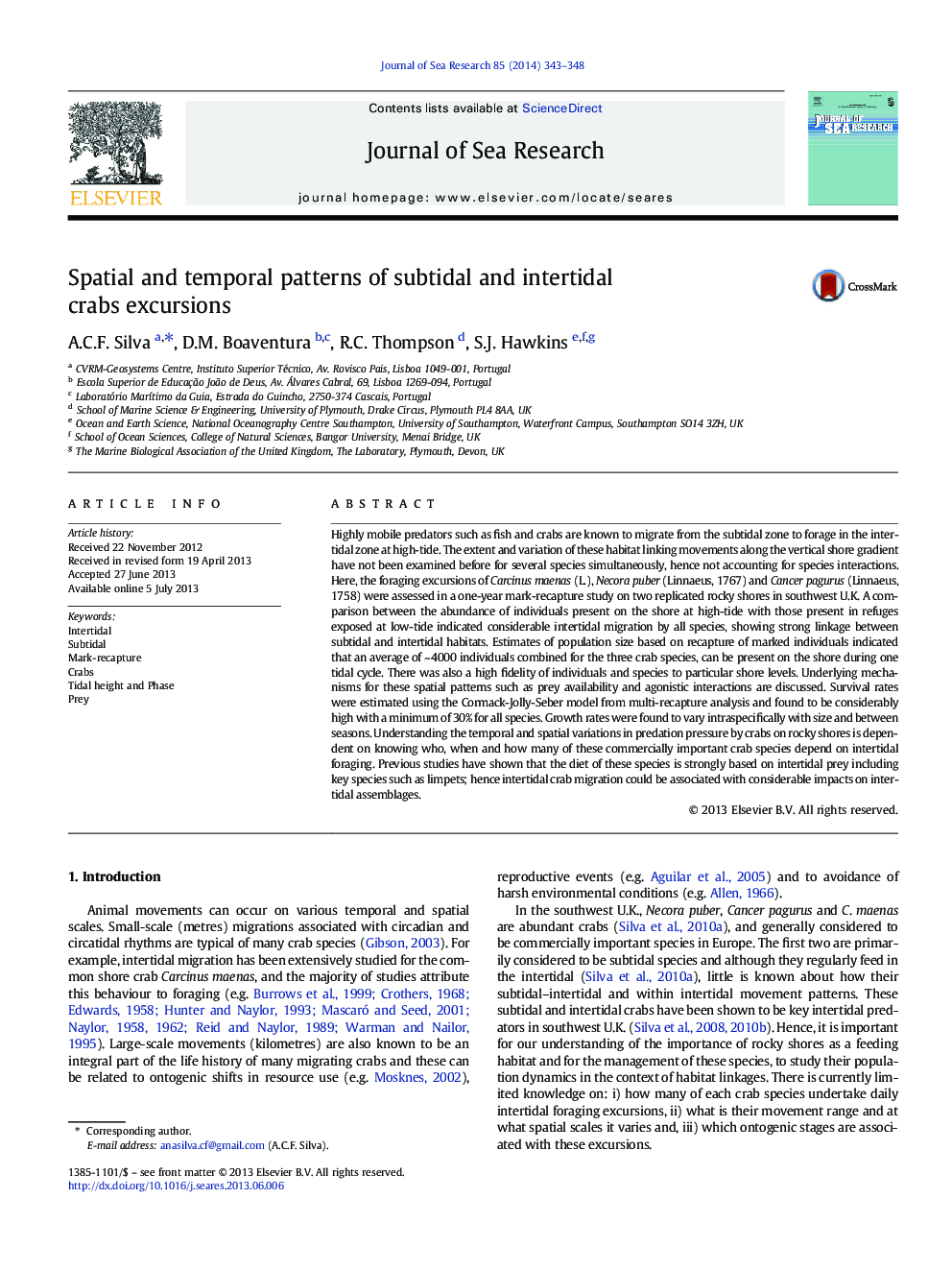| کد مقاله | کد نشریه | سال انتشار | مقاله انگلیسی | نسخه تمام متن |
|---|---|---|---|---|
| 6387416 | 1627489 | 2014 | 6 صفحه PDF | دانلود رایگان |
- Subtidal and intertidal habitats strongly connected by migrant crabs.
- There was a high fidelity of individuals and species to particular shore heights.
- Survival rates were considerably high with a minimum of 30% for all species.
- Growth rates were found to vary intraspecifically with size and between seasons.
Highly mobile predators such as fish and crabs are known to migrate from the subtidal zone to forage in the intertidal zone at high-tide. The extent and variation of these habitat linking movements along the vertical shore gradient have not been examined before for several species simultaneously, hence not accounting for species interactions. Here, the foraging excursions of Carcinus maenas (L.), Necora puber (Linnaeus, 1767) and Cancer pagurus (Linnaeus, 1758) were assessed in a one-year mark-recapture study on two replicated rocky shores in southwest U.K. A comparison between the abundance of individuals present on the shore at high-tide with those present in refuges exposed at low-tide indicated considerable intertidal migration by all species, showing strong linkage between subtidal and intertidal habitats. Estimates of population size based on recapture of marked individuals indicated that an average of ~Â 4000 individuals combined for the three crab species, can be present on the shore during one tidal cycle. There was also a high fidelity of individuals and species to particular shore levels. Underlying mechanisms for these spatial patterns such as prey availability and agonistic interactions are discussed. Survival rates were estimated using the Cormack-Jolly-Seber model from multi-recapture analysis and found to be considerably high with a minimum of 30% for all species. Growth rates were found to vary intraspecifically with size and between seasons. Understanding the temporal and spatial variations in predation pressure by crabs on rocky shores is dependent on knowing who, when and how many of these commercially important crab species depend on intertidal foraging. Previous studies have shown that the diet of these species is strongly based on intertidal prey including key species such as limpets; hence intertidal crab migration could be associated with considerable impacts on intertidal assemblages.
Journal: Journal of Sea Research - Volume 85, January 2014, Pages 343-348
